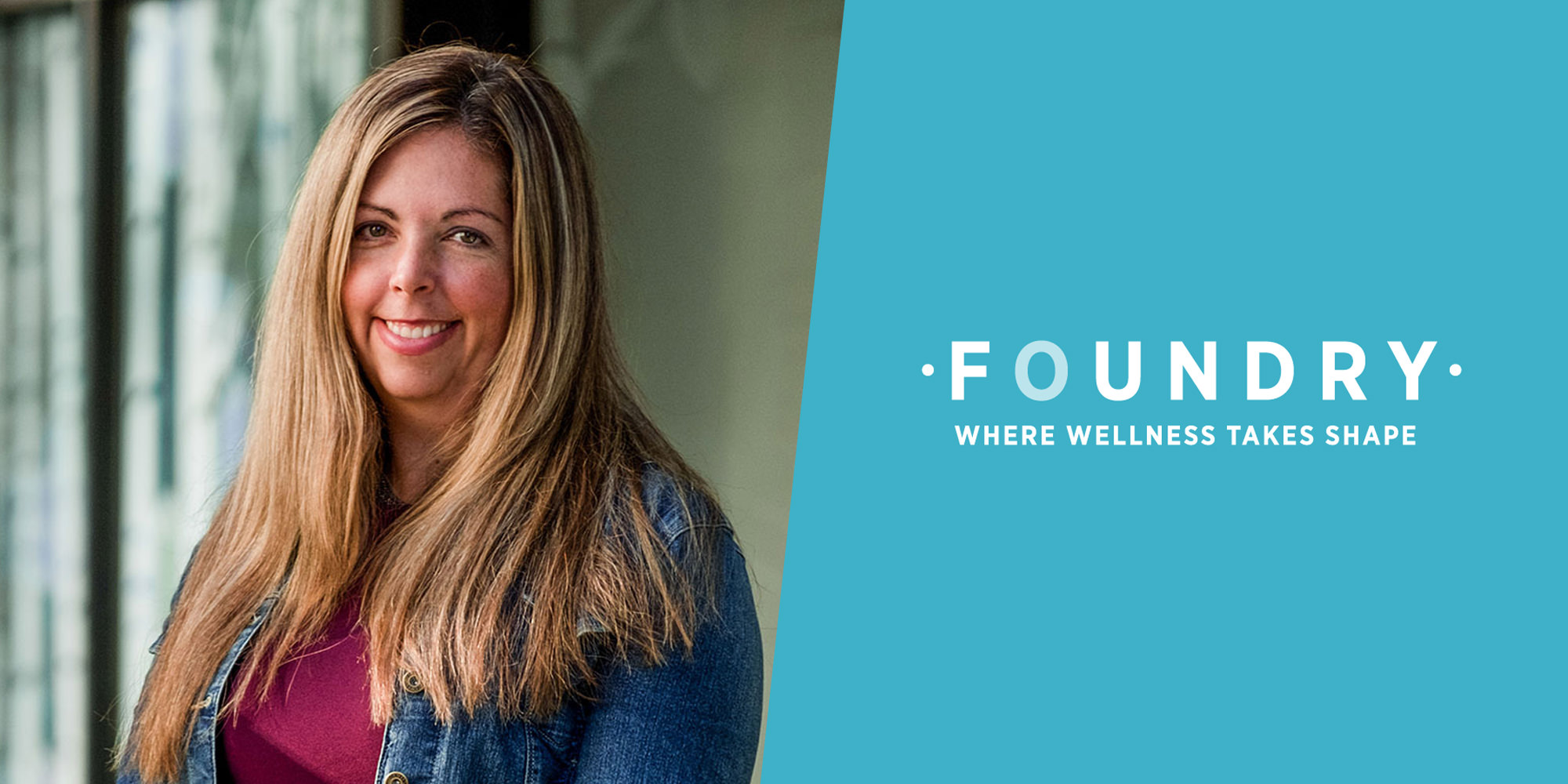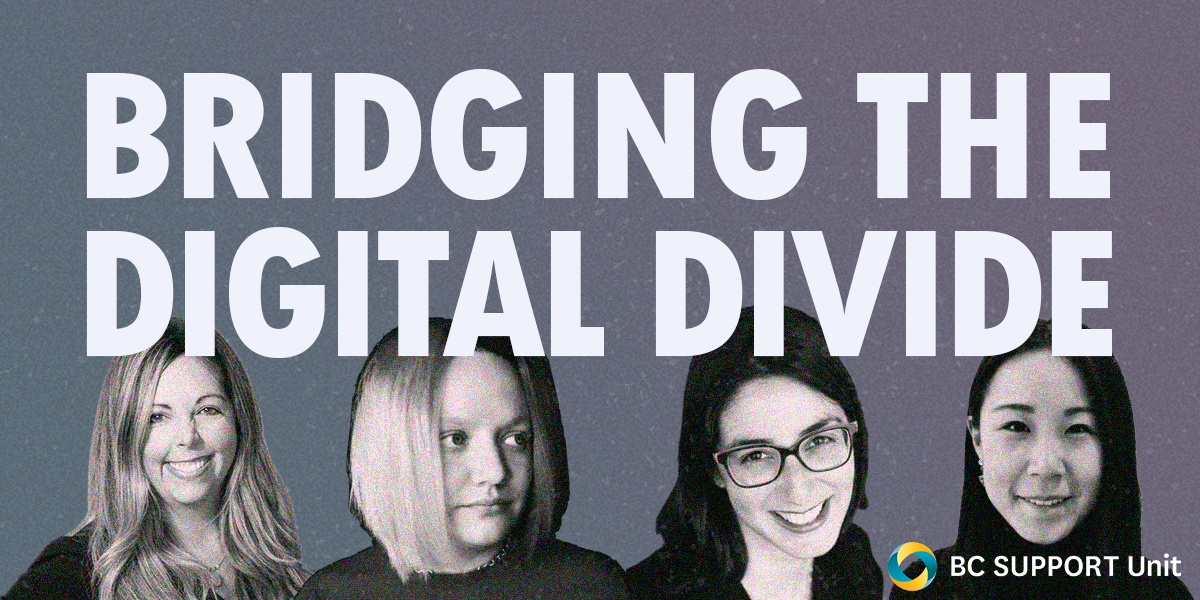In this week’s guest blog post, Dr. Skye Barbic follows up on her colleague, Dr. Shelly Ben-David’s, previous post: Bridging the Digital Divide Among Youth in BC. Funded through the BC SUPPORT Unit Patient Engagement Methods Cluster, this project is investigating the barriers youth face in accessing health information online. In this post, Dr. Skye Barbic reflects on the process of conducting a scoping review of the available literature – of which there’s a lot!
Scoping reviews: Literature reviews that “scope” out potential language, concepts, and areas of inquiry from a broad base of literature.
How do you keep a team of researchers engaged when the first step is screening 15,047 studies in the literature that might answer your research question?
Our study team is researching the gaps that prevent some youth from accessing online health information – the “digital divide” – and how they can be bridged. Early on, we made the choice that the study extraction phase of our project would be done by the two academic project co-leads, Dr. Shelly Ben-David and myself. There are two reasons for this: (1) Shelly and I felt that we needed to get on the same page regarding the current state of the literature and (2) we were concerned that that the burden of screening this many articles may be associated with poor moral distress. The following blog reports on both of these things, from my perspective.

What have we learned from our scoping review so far?
Besides the obvious question of “how much” literature exists about youth accessing health information online, we have walked away with significant reflections on the black and white views on this topic within the field. Our research started broad – we wanted to understand what evidence exists to help young people navigate the digital divide. Our preliminary results suggest that the evidence either strongly supports digital technology for health navigation OR strongly opposes it. In some studies, digital technologies were labelled as ‘causal explanations’ for poor health of young people and the new ‘devil’ contributing to health service ‘overutilization.’ On the flip side, we found an emerging field of evidence-based advocacy (notably in the last 5 years), supporting the need for health systems to integrate digital technologies to help young people access health services in a timely, youth-centred fashion.
We were looking for specific studies about how digital technologies were being used to help young people navigate health systems and experiences.
The challenge for our next phase of this scoping review (data extraction and analysis) is to bridge the narrative between these two types of results. Screening the data made me reflect considerably on a few conferences I have attended recently – where this black and white thinking was prominent (technology is good vs technology is bad!). Our team member Alicia was a panelist at one meeting. As the audience was getting quite fired up and argumentative, Alicia encouraged everyone “to lean in” to both sides of the argument “with curiosity.” Our team’s challenge will be to become curious and understand the history underlying both sides of the story. I look forward to meeting the team in March to connect the narratives and brainstorm ways to meaningfully present these results.
15,047 articles= moral distress?
Our team is comprised of diverse research expertise – but I am certain that most people would say I am the person who loves numbers the most (I would say Shelly loves narratives, Nancy loves using stories to engage youth and inform policy, Alicia loves advocacy, and Andrea loves using stories to train the next generation of youth leaders). All this to say, when there was an opportunity to review 15,047 articles and play with a fancy new software called Covidence to organize the data – I was in! My first finding was that Covidence is amazing. There is no way I could ever have reviewed this many articles with scientific rigor without it. We received some much needed hand-holding from our McMaster colleague Dr. Carrie Anne Marshall to get going – and it has been smooth sailing.
My second finding was that the literature base is enormous and every study was potentially eligible (imagine that Table 1 in the journal!). Shelly and I had weekly, daily, sometimes hourly meetings to figure out how to narrow the search and inclusion criteria. We settled on the following: we would omit any study that was simply looking at the association between digital technologies and mental health. We were looking for specific studies about how digital technologies were being used to help young people navigate health systems and experiences.
Even with that criteria, I found that there were thousands of articles to distract me from this focused question. I now confess to have spent extra hours reading interesting articles that didn’t fit our criteria. I may also have spent many hours sending these articles to peers and having great conversations about new research possibilities over coffee. For these reasons… I was the last to finish my screening processes. But my team have been lovely and patient, and I hope recognize my new passion for this area.

However… this passion has ground to halt recently. I have 1467 articles left to screen. Each one looks like Mount Everest. I received a much needed power talk from Shelly this morning, and I am back at it. I have asked for an accountability marker, so I can finish by Friday. I did 45 articles today after lunch. Gave up. And started writing this blog instead. Maybe Saturday is a good deadline?
I know I will finish. I know it will be great and I will be reunited with my team again. But the reality is screening 15,000+ articles alone, away from your fellow screening partner, is way too much. The problem is not related to our screening parameters. Our methods are excellent. Based on several reviews I have conducted in the last decade. The difference between this one and the last ones is time.
The good news, is our team is comprised of some of the brightest minds in youth-engagement and youth innovation.
The University of Ottawa reports that 2.5 million new scientific papers are published each year, and the number of publishing scientists worldwide is increasing at a rate of 5% annually. In 2014, 28,100 active scholarly peer-reviewed journals existed, so we can imagine in 2020 this number must be close to 30,000. Add this to the increasing number of predatory/fake journals that exist that produce high volumes of low-quality research, I feel like this may be the last review I do for a while… ironically until digital technology exists to help researchers bridge the literature/publication divide. Researchers’ information-production and proliferation has created the potential for us to drown in knowledge or miss important information. The pressure to “publish or perish” for young researchers is real- and Shelly and I feel it every day. Yet, one questions the purpose of writing dozens of papers if they are only going into a large virtual pile, for the potential to not be read. What will it take to write the paper that gets someone excited? What will that paper need to look like to make that ‘someone’ skip out of a meeting to have coffee with a passionate peer to discuss findings and inspire a new area of research?
In an era where young people are driving how care and services are delivered, it is critical that they have a voice in interpreting the current research base and providing direction for how it is presented.
This project is ambitious, and I have no doubt that we will achieve the deliverables. My fear is that we do so in the most traditional of academic ways- and lose the story we are trying to develop. The good news, is our team is comprised of some of the brightest minds in youth-engagement and youth innovation. I have full faith that we will not just publish a paper, but do something that is interesting, that will have a sustained impact.
Going back to our decisions at the beginning of this blog, I think they were good ones. A good reality check – and a good sign that we cannot do this without young people. Time to break some trends, wrap this part of the project up, and start interviewing young people in BC. Scoping reviews are important and can set the tone for the next steps of your research. One thing is for sure, the publication explosion is not going to go away. Researchers need to be allies to the youth community by helping access the information, navigate and manage the relevant publications. In an era where young people are driving how care and services are delivered, it is critical that they have a voice in interpreting the current research base and providing direction for how it is presented. I look forward to the next phases of this project and working closely with this team. Back to the grind 1467, 1466, 1465, 1464…1463… oh look at this interesting article…! Who wants to go have coffee and talk about it?
Previous Posts About the Digital Divide
Not all youth may have the same access to digital information and communication technologies.





Leave a Reply